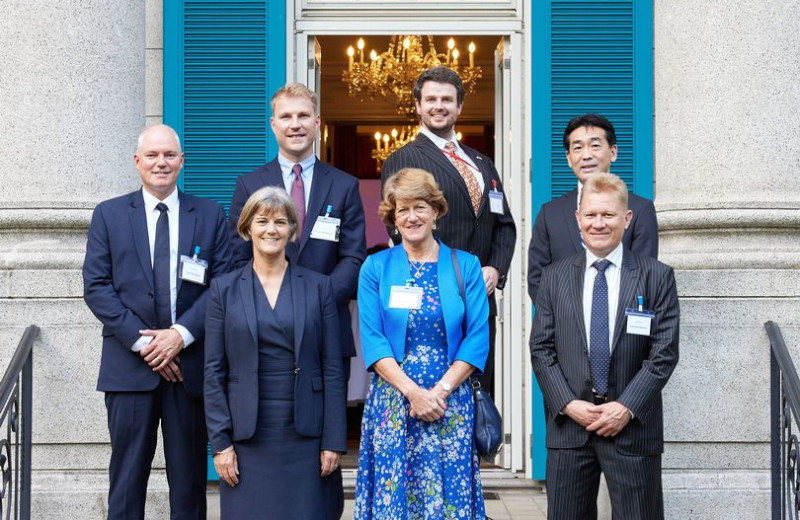Roger Smith is Japan Director at Mighty Earth, a global advocacy organisation campaigning to stop deforestation and address climate change. This is an edited interview between him and our editor Alasdair MacEwen from an episode of our podcast.
For articles and podcasts explaining the environmental, economic, and climatic risks of woody bioenergy, visit our collection, Bioenergy Explained.
Give us a bit of background about the Japanese energy sector. It would be great to understand where coal and biomass fits into the energy picture in Japan.
Japan imports pretty much all of its energy. Coal, oil, gas, uranium for nuclear. Most of the wood is imported too. After the Fukushima nuclear disaster in 2011, Japan created a renewable energy incentive program, and for a time, Japan was the second biggest producer and consumer of solar power in the world. Unfortunately, as part of that same subsidy programme, there’s also an incentive to import and burn wood. It is actually the highest incentive in the entire world at ¥24 (0.18 USD) per kilowatt hour.
That’s big money, and has driven a lot of Japanese companies to look abroad for where they can get this wood cheaply. Japan’s emissions are now going up, and in the meantime, foreign forests are on the chopping block. Mighty Earth have made recommendations for how Japan could put this genie back in the bottle and spend its subsidy money in a wiser way that actually gets greenhouse gas reductions, that doesn’t harm forests abroad, that doesn’t harm the health of people in communities where their forests are being chopped down. This would also provide more long-term energy security for the country because there really is renewable energy potential in Japan with wind power, geothermal, and solar. You don’t have to import wood to do this.
Can you explain how wood-burning has become part of this renewable energy incentive program?
The Feed-in Tariff really just sets a fixed price. If a generator can build a power plant, for every kilowatt hour it produces, it gets ¥24, on a 20-year contract. That’s a massive incentive. They have certainty that they’re going to get paid the subsidy above and beyond the value of the energy. That’s what enables them to sign contracts with companies abroad, including Drax, to import fuel to Japan.
The second thing is the Energy Conservation Act, which aims to make the power sector more efficient. Thanks to industry, there’s a loophole in there. Biomass is not counted as a fuel input, meaning the emissions for the wood are not counted either. Magically, you dump a bunch of wood in, you produce the same amount of power or more power, but your emissions go down, on paper. The reality in the atmosphere is different.
I think biomass was an unintended consequence. I think Diet members were thinking of what the biomass industry was like 15, 20 years ago: a small industry in Japan taking waste from local forestry operations and generally using it locally. But in reality, the incentive that they structured was such that it became a whole lot more attractive to think large scale.
How might biomass burning develop in Japan? I know you’ve done some work on that.
The scale is the scariest thing. Researchers have estimated that if the world met an additional 2% of its energy needs from biomass, you’d have to double all commercial wood harvest. That’s the potential threat here. In Japan too, we’re not necessarily talking about a lot of energy. Today, we’re literally at just a couple percent of energy use from biomass, and we’re at about the equivalent of 6 million tonnes of wood pellets (I say equivalent because they’re also importing other woody type products). Industry themselves are projecting that Japan will be somewhere in the 9-10 million tonne range by 2027.
Worryingly, there’s not an upper bound. Burning biomass in coal plants doesn’t have a clear ceiling to it. Coal plant owners don’t want to phase out these plants. You could very quickly have Japan consuming more than the world produces today in biomass. In 2020, the world produced about 20 million tonnes. By the end of the decade, it’ll be closer to 40 million tonnes. That’s not a lot of time to see this type of increase. Japan could easily be in the 20 to 40 million tonne range itself if the policies support it. That’s why Mighty Earth, Friends of the Earth Japan and a whole coalition of groups are working together so we don’t repeat the mistakes of the UK and EU.
What kind of long-term policy solutions should we be looking at, then?
Japan shouldn’t be subsidising any new biomass going forward. That’s clear. For the same investment of yen, you can get much more energy output without environmental destruction. In my opinion, I like competition. Create a system that gives subsidy based on which renewable energy can reduce the most CO2 for the lowest cost. If you rejigger it that way, biomass loses every single time.
There also needs to be stringent lifecycle greenhouse gas standards. Power companies shouldn’t be claiming benefit for something that’s actually increasing emissions.
There’s been a lot of focus in the UK and in the European Commission on greenhouse gas removal technologies, including bioenergy with carbon capture and storage (BECCS). What’s going on in Japan with that?
BECCS is part of the overall carbon capture discussion here. You have to understand, Japan is a technology leader in some areas, but generally dirty areas. That means coal plants, gas terminals, natural gas plants, mining. For CCS, Japan actually is a technological leader. You’ve got companies like Mitsubishi Heavy Industries that have some of the best engineers working on this and they’ve gotten to a point where the technology itself is viable.
It’s the implementation that raises a massive question mark. Japan wants it to work. The problem is that Japan is prone to earthquakes, and doesn’t really have gas or oil reserves. There isn’t an obvious place to pump the CO2 back into. And not only does the power sector want access to whatever CO2 reservoirs there are, also heavy industry does. There just isn’t enough to go around. Ultimately the path they’re on is a dead end.
There are plans to put the CO2 onto ships, ship it to Southeast Asia and then dump it under the sea there. And yeah, maybe technically that’s possible, but what is that going to cost? Does Southeast Asia really want to be a dumping ground for Japan’s CO2? Does any of this make sense or is it just industries being taken care of by the government, but at the expense of Japanese society as a whole?
Our real fear is that come 2035, 2040, 2050, we realise that this carbon capture pathway is just not going to work, by which point Japan’s blown through whatever carbon budget it had and is going to actually set the world back on limiting temperature increases to 1.5 degrees.
I’ll come back to you on the point you made about Japan’s dirty energy infrastructure. Why do you think the country did not remain a leader in clean renewables?
With Japanese politics, you have to look at who’s in charge and who has the ear of those who are in charge. Global companies like Sony understand global markets, they understand they have to reduce their emissions. But these high tech product companies are not the ones with influence, it’s the ones who have a more historic connection to Japan’s economic miracle. That’s the steel industry, the auto industry, and to a somewhat lesser extent, also the power industry. These are the industries that built post war Japan, that overtook Britain as a shipbuilding nation out of the ruins of World War II, then overtook the US auto industry a couple of decades later.
So there’s this historical legacy. And if you look at the trade groups, they’re really dominated by industries like that. It’s Toyota, it’s the steel manufacturers and others. These really aren’t the drivers of the modern Japanese economy. There’s a mismatch in whose voice is the loudest and who’s getting heard and who’s actually relevant in terms of Japan’s future. The Japanese government has these export infrastructure plans that were really designed to compete with China’s Belt and Road, based on selling boilers, for nuclear reactors, coal plants, gas plants.
They continued on this path longer than any other developed country. But the world has changed. Banks are pulling out, other governments have pulled out. Ultimately, Japanese banks followed suit, and then the trading companies. The Japanese government was literally left in Matabari, Bangladesh in 2022 with a 1200 megawatt power plant proposal that it couldn’t find a single company to build. That’s when it pulled funding and decided not to build any more coal plants.
They haven’t given up. They’re still pushing gas terminals, and extraction infrastructure in places like Canada. They’re still arguing that things like CCS, hydrogen, ammonia, are part of Japan’s green transformation. There’s a real reluctance to let go of failed business models or technologies that are of the past. I think CCS, whether for coal plants or for biomass plants, is emblematic of a past and has little viability.
What can international campaigners learn from a Japanese perspective on bioenergy?
I think that’s also a tremendous vulnerability for Drax. They’re assuming that Japan and other countries are going to keep signing long term agreements for these pellets. They’re assuming that there is supply in places like British Columbia where there’s tremendous public pressure to stop logging their old growth and primary forests so much.
The other part of Drax’s future business model beside producing bioenergy and BECCS is in pellet production. They’re in Asia now, and they established a Tokyo sales office last summer. They’re clearly looking at other places, for example in Southeast Asia, that have coal infrastructure, and at the same time they bought up British Columbia’s pellet industry. The two major makers there, Pinnacle and Pacific Bioenergy, are now part of Drax [1]. The Yorkshire power station isn’t a growth market. Their growth seems to be on exporting this business model with the know-how, and the pellet supply chain along with it.
Drax’s sales to Asia in its own shareholder filings are on the same level to the amount of pellets it is using itself. Watch what’s happening here and if the winds change. If Japan and Korea and other countries decide that sending out tremendous amounts of money to foreign companies to chop down trees isn’t a great thing, I think a company like Drax might be left holding the bag.
Endnotes
[1] Drax bought Pacific Bioenergy’s contracts, not the company, which is now permanently closed.





